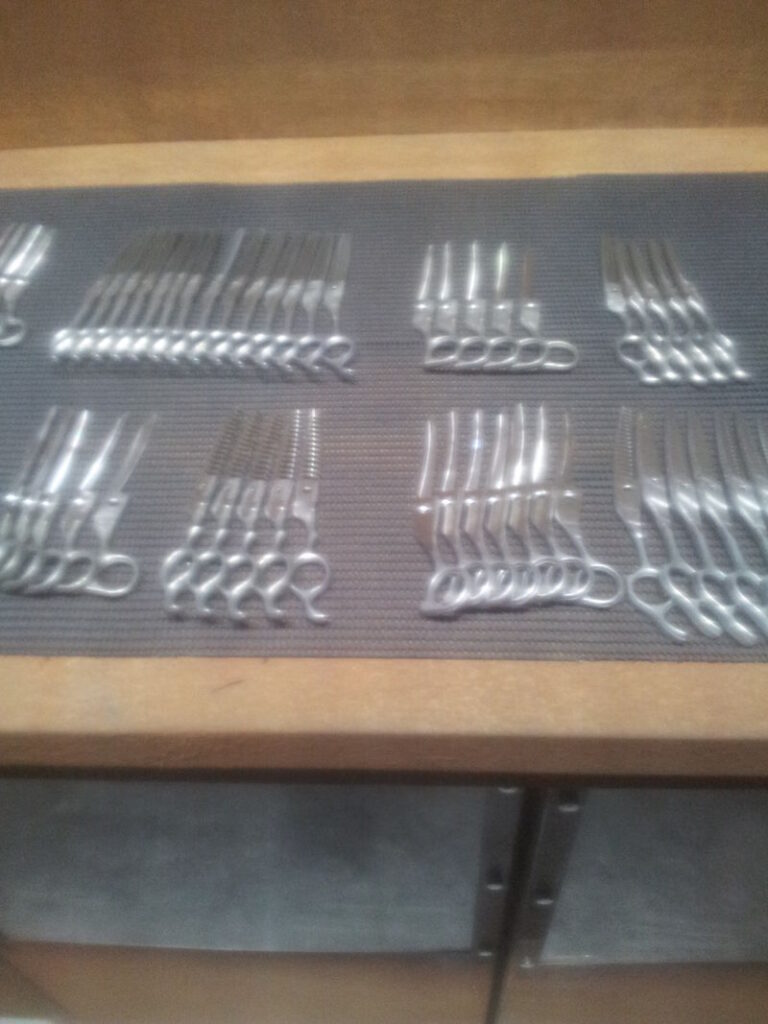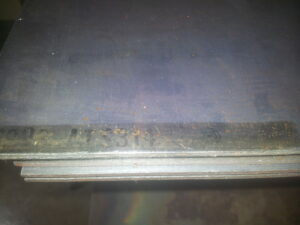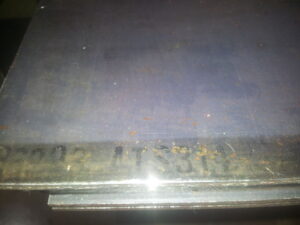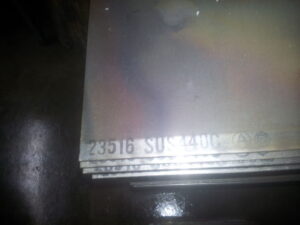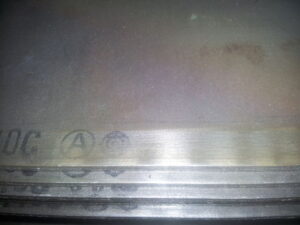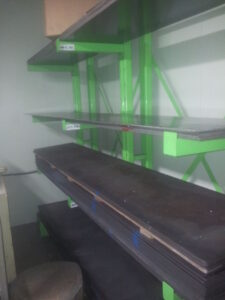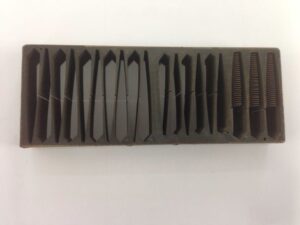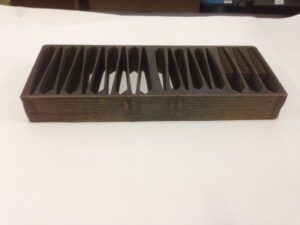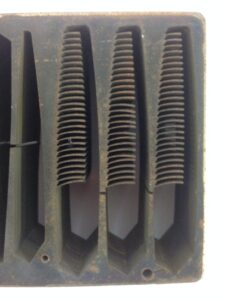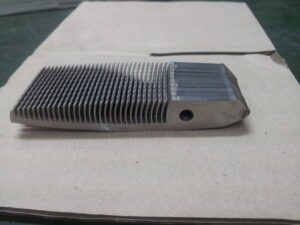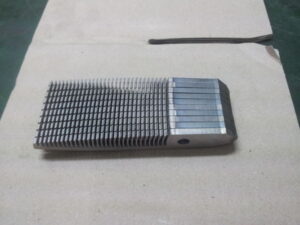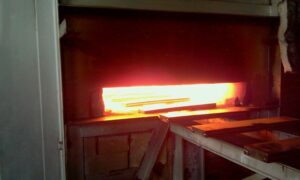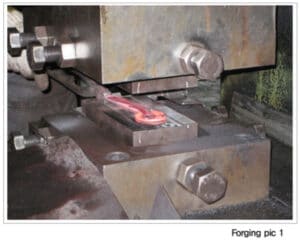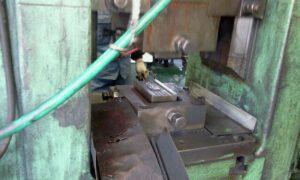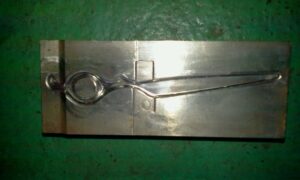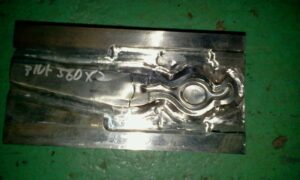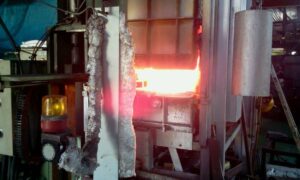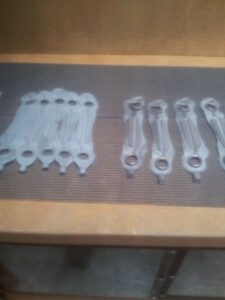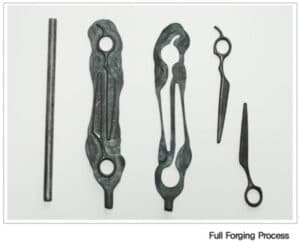Making a forged scissor
First the steel is made in the Furnace and is a liquid base. It is then poured into an Ingot form where it will solidify. After solidification it is hot or cold rolled down to the desired thickness. for scissors this is 3 millimeter. now it is a sheet metal. From this stage there is 2 ways to go. It can either be wire cut into scissor blades directly, or it can be wire cut into steel-rods and then forged into scissor shape (raw scissor).
Steelplates:
Furnace and Forging:
Heat treatment:
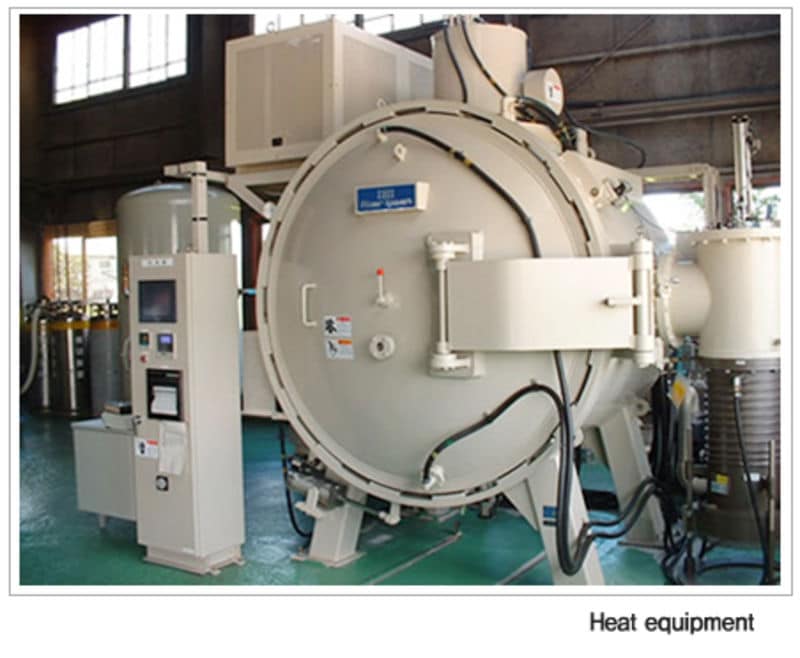
If the Steel should be forged, the sheets are wirecut into steel-rods and then heated up to red-glowing stage and is then forged with a big industrial forging block (“hammer”). This is NOT done by hand. The forging block will form the steel rod into the desired shape – a scissor. (NB. sometimes two different steel rods are welded together – one in good steel for the blade and one in less quality steel for the handle.) After cooling down the raw scissor is sometimes forged again while being cold. This is “cold forged” and is considered to be the best steel available. The scissor will now be trimmed, have the pivot drilled, the concave made and is now tempered to give it the desired hardness. (The manufacturer can decide how hard the final hardness should be. This is controlled by computer today.) Then the scissor is shaped, sharpened and polished.
Please be aware that probably 90-95 % of the scissors on the market today is NOT forged. Most is wire cut as these are cheaper to make. however – and unfortunately – many are claiming to have forged scissors but really they are selling wire cut scissors.
We also see the term “Hand forged” on certain websites. – this is not possible as it would cost thousands of dollar to produce one scissor. Only a few smiths is making hand forged samurai swords today, but those start at about U$50,000,00 each for a sword in good quality and takes between 6- 12 months to make. Anybody who is comparing how their scissors is being made with samurai swords, are not manufacturers but merely distributors and exporters/importers, who will use fancy superlatives to make their scissors sound better.
Steps in making a cold forged Raw-scissor:
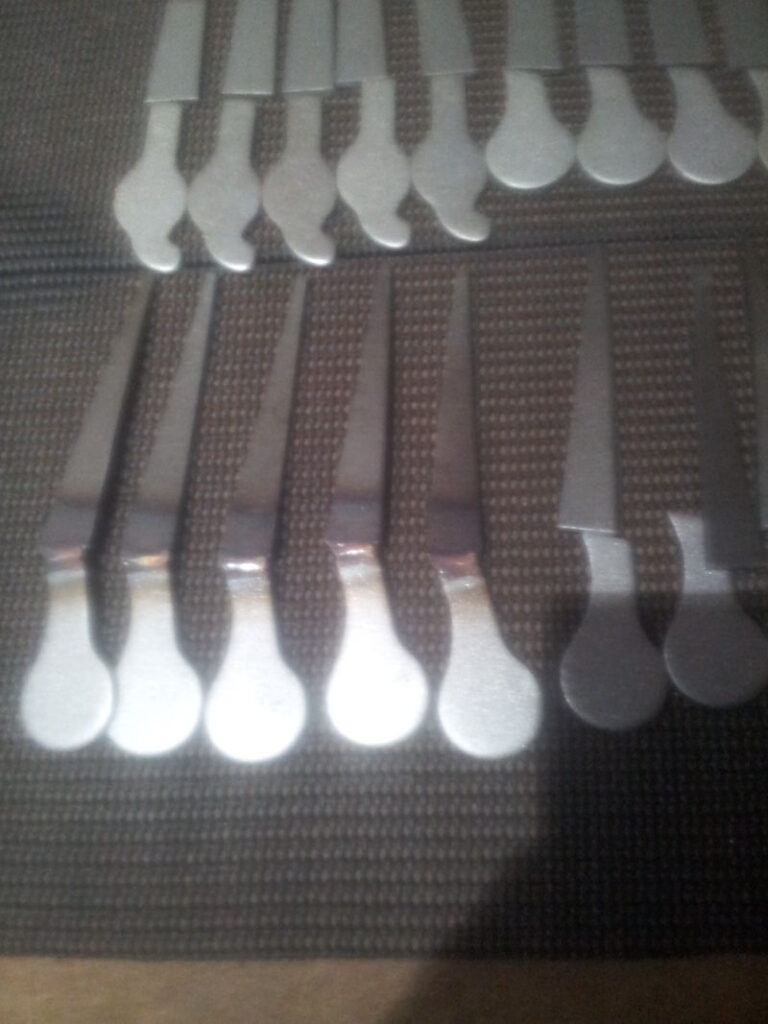
Two pieces of metal is welded together. the blade in high quality steel and the handle in other steel.
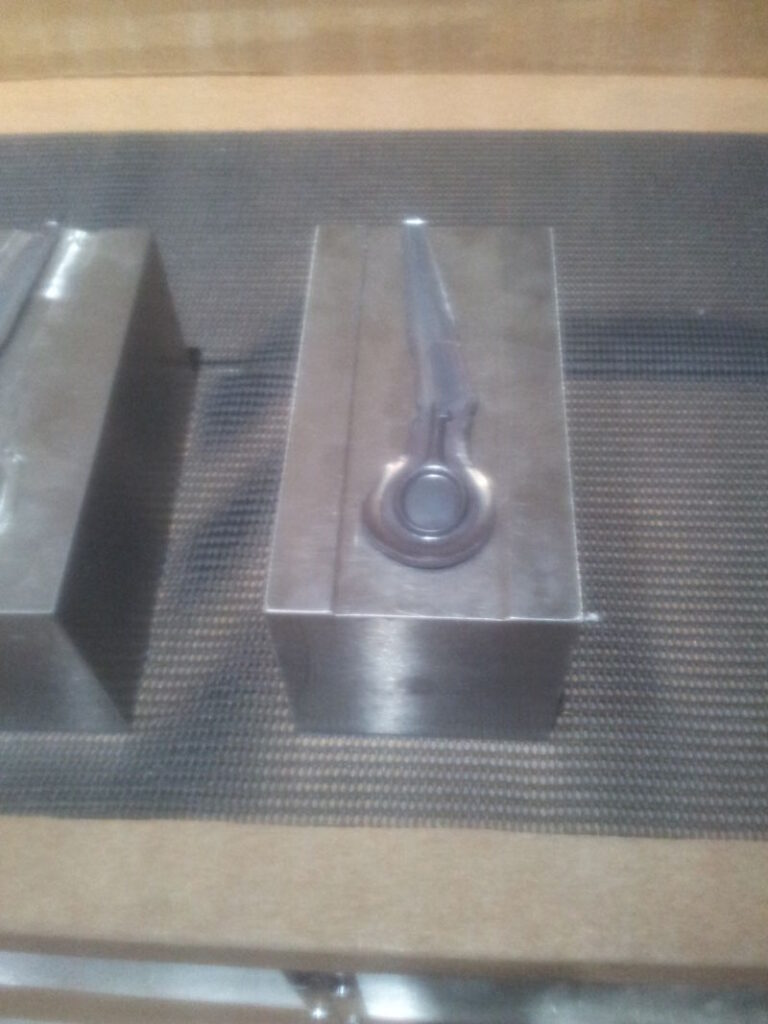
Then first forging is made. This is done hot. - the raw-scissors is heated up to red glowing color. Then forged.
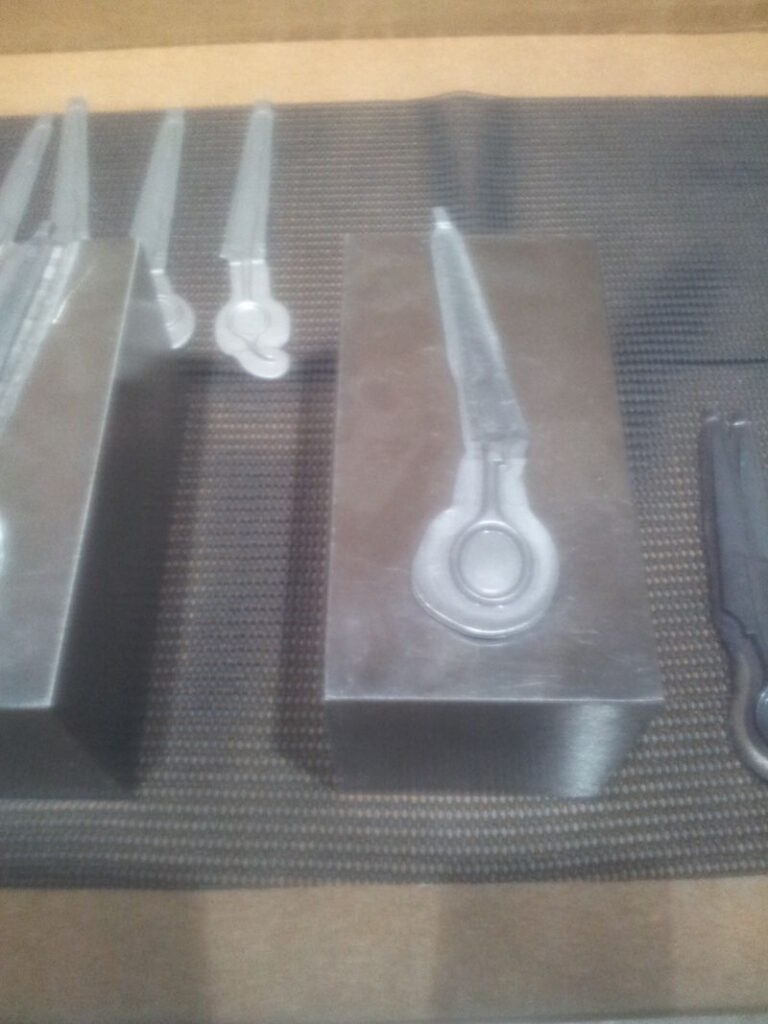
Then second forging is made when the raw-scissors has cooled down from the first forging. This time it will be at room-temperature when forged. This is Cold forging.
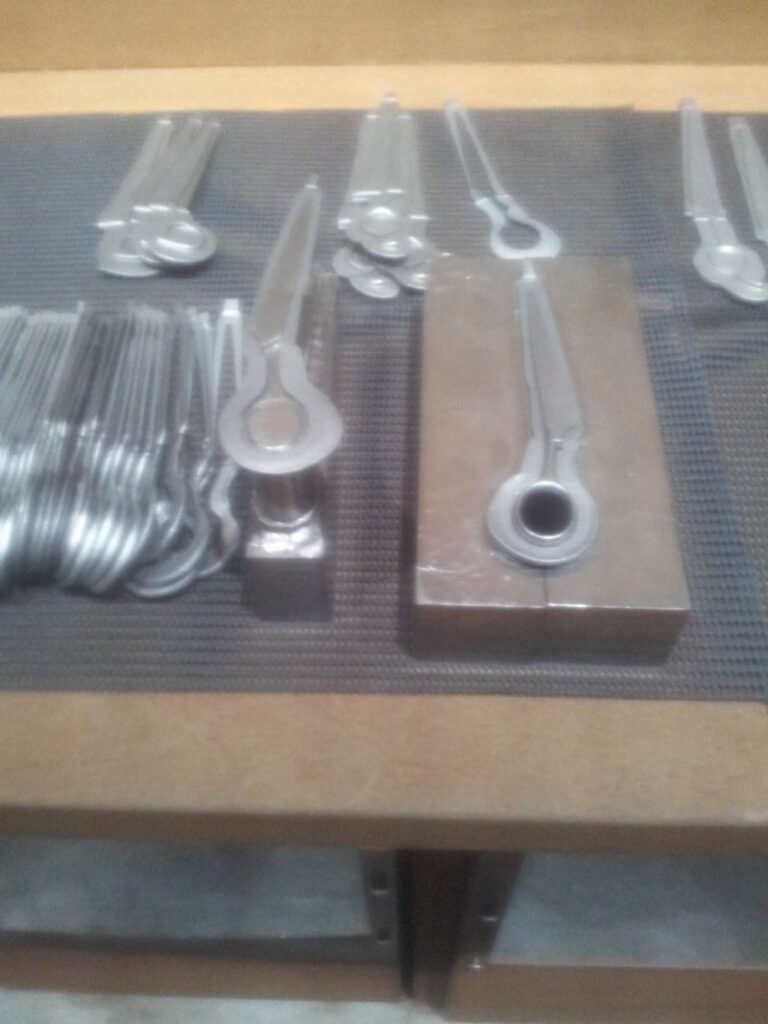
Now a third forging block is used to remove the metal inside the finger rings. After this the trim is removed around the scissor.
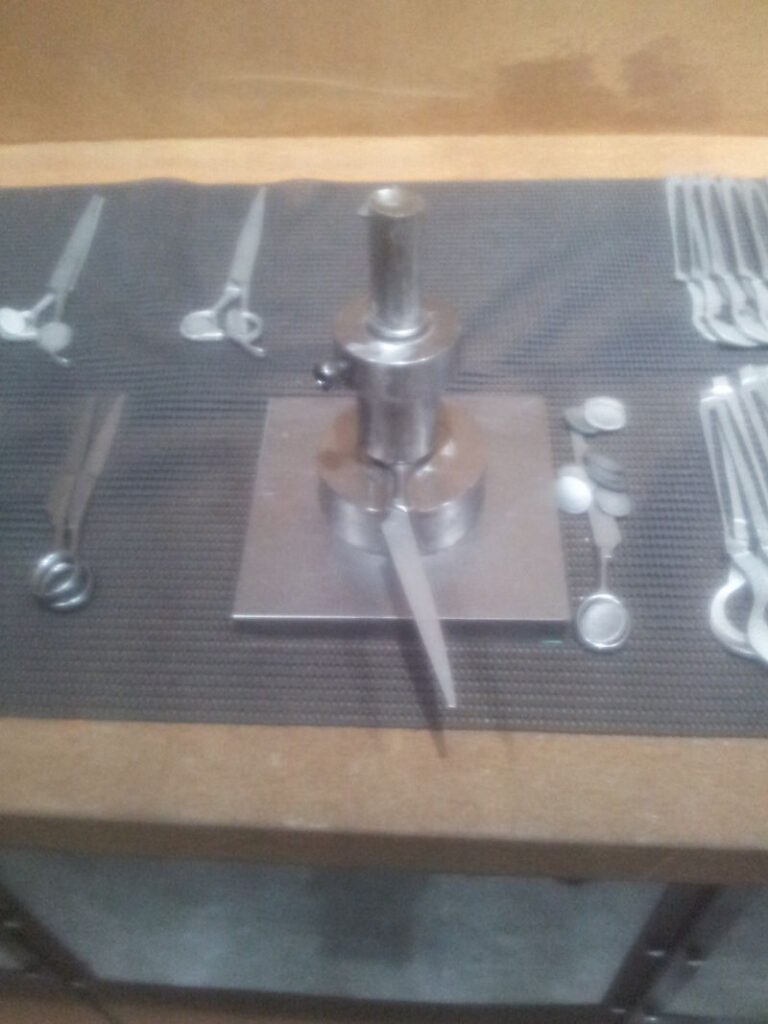
However - sometimes the metal in the fingerring can be hard to remove and then another tool is used for removing this metal inside the rings.
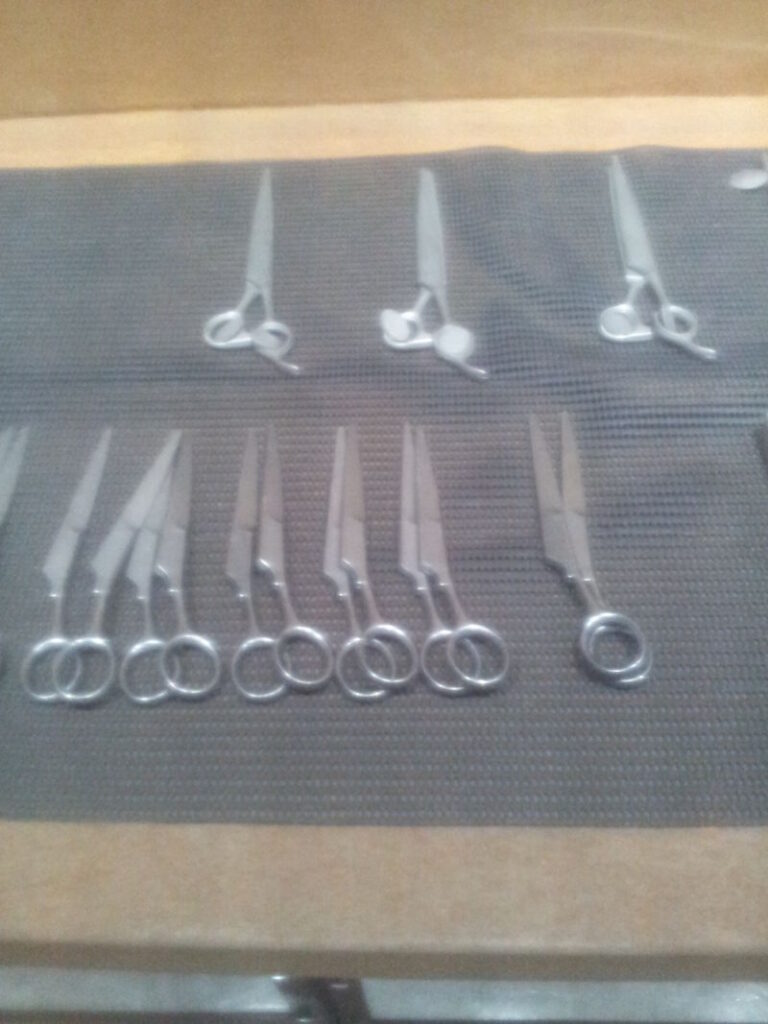
At this stage the scissor will have the holes drilled for the finger-rest, screw and bumper. Then it will be heat treated.
